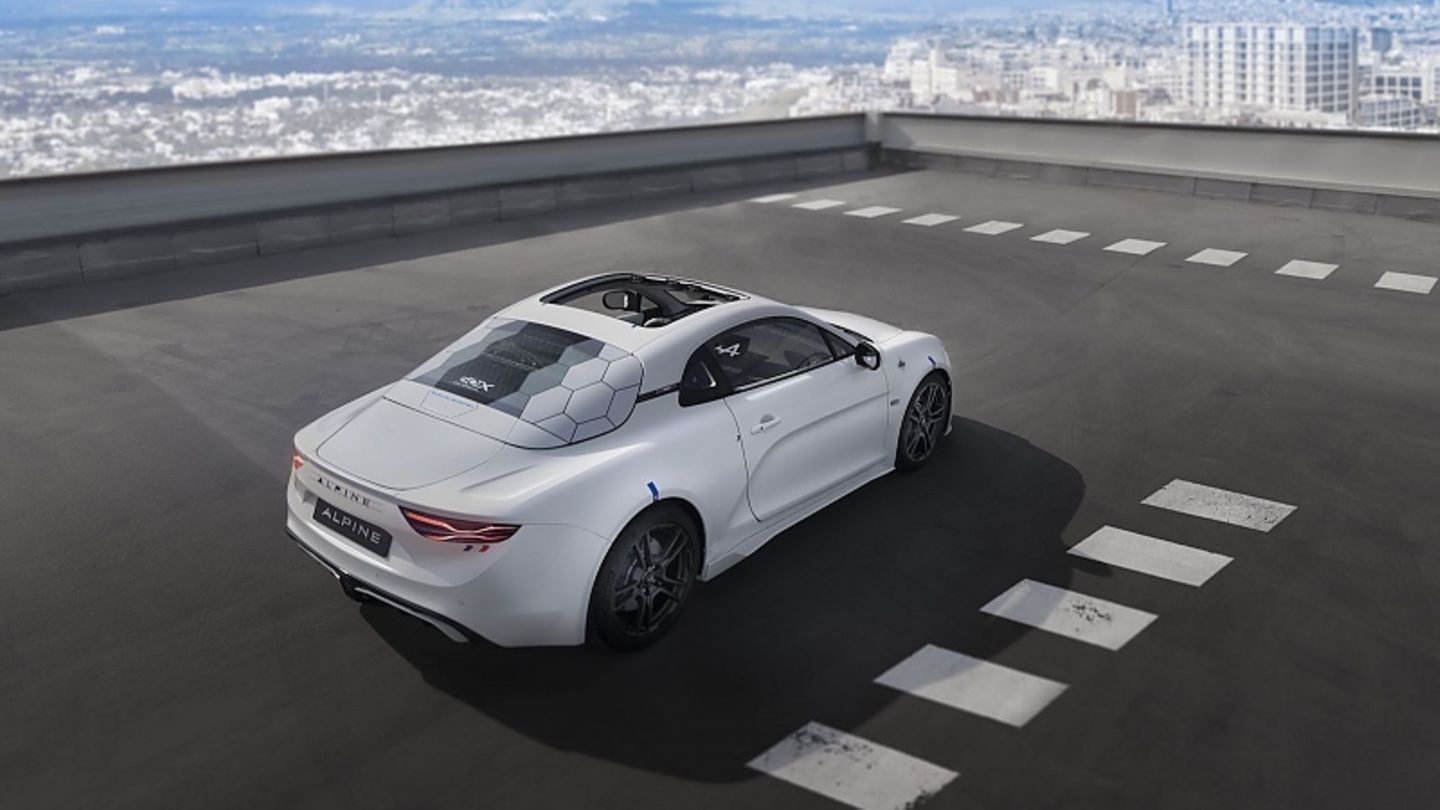The sports car world is also slowly becoming electric. No one does this more consistently than Porsche, because even the entry-level models Cayman and Boxster will only be powered electrically in the next generation. Renault doesn’t want to stand back and shows that the emotional compact athlete Alpine A110 is also prepared for the electricity age.
First of all, the Alpine A110 E-Ternite is a concept that Renault’s sports car offshoot wants to present as part of the Le Castellet Formula 1 race for its 60th birthday. “I want to electrify Alpine to keep the name forever,” said Renault CEO Luca de Meo shortly after joining the company. Alpine CEO Laurent Rossi and his brand engineers have now turned this challenge into reality with a near-series study. The A110 E-Ternite is a fully electric open sports car based on the well-known A110, which relies on lightweight construction.
The battery modules are identical to those of the new Renault Megane E-Tech Electric. In order to achieve optimal weight distribution and to accommodate the twelve battery modules in the narrow sports car, a special battery housing was developed for the A110 E-Ternite that fits the vehicle architecture. Four modules were placed in the front and eight in the rear. Despite the twelve additional modules, the total weight of the electric Alpine A110 remains quite low with an increase of 258 kilograms compared to the production version with a petrol engine. The electric motor has been supplemented by a two-stage ZF double-clutch transmission, which is said to be as smooth-running as it is light and compact.
The French one-off is powered by a 178 kW / 241 hp electric motor on the rear axle, which, thanks to the 300 Nm maximum torque, accelerates from zero to 100 km/h in 4.5 seconds and is therefore only just behind the A110 petrol engine. The maximum speed is 250 km/h. The current unladen weight of 1,378 kilograms is almost 260 kilograms more than the combustion engine and should drop to 1,320 kilograms for a production vehicle. The weight distribution has hardly changed, which at 42:58 in favor of the rear axle is almost identical to that of the petrol engine. When it comes to range, larger cuts have to be made, because at 420 kilometers the A110 E-Ternite has to be recharged much earlier than it has to be at the pump for refueling. The 60 kWh battery pack can be recharged with up to 200 kilowatts.
In contrast to the Alpine A110, the electric study is a Targa with an open roof. The two roof shells made of recycled carbon can be removed to bring sunshine and fresh air into the car. Also new are the multimedia system with eight loudspeakers and the use of flat parts for the interior, which are shown with a second eco-study. The prototype has modules such as the bonnet, roof, rear window, radiator grille and seat shells made of flax, which has properties similar to carbon fiber.
Source: Stern
I am a 24-year-old writer and journalist who has been working in the news industry for the past two years. I write primarily about market news, so if you’re looking for insights into what’s going on in the stock market or economic indicators, you’ve come to the right place. I also dabble in writing articles on lifestyle trends and pop culture news.




